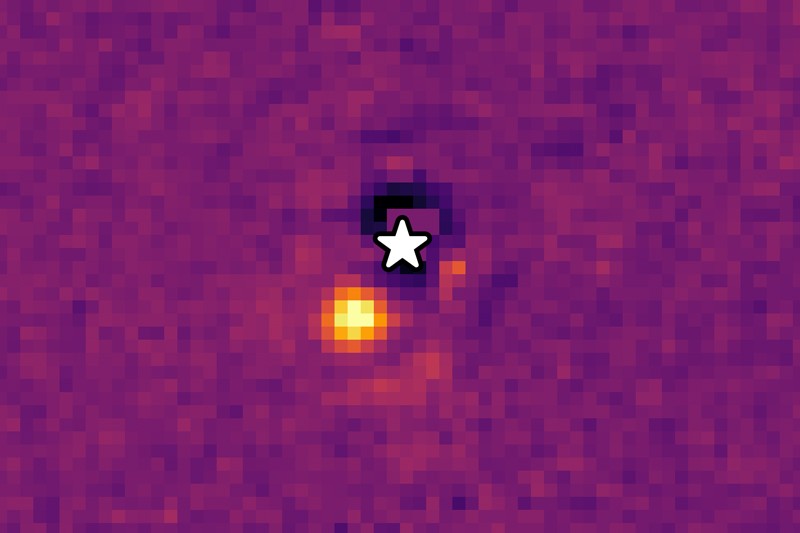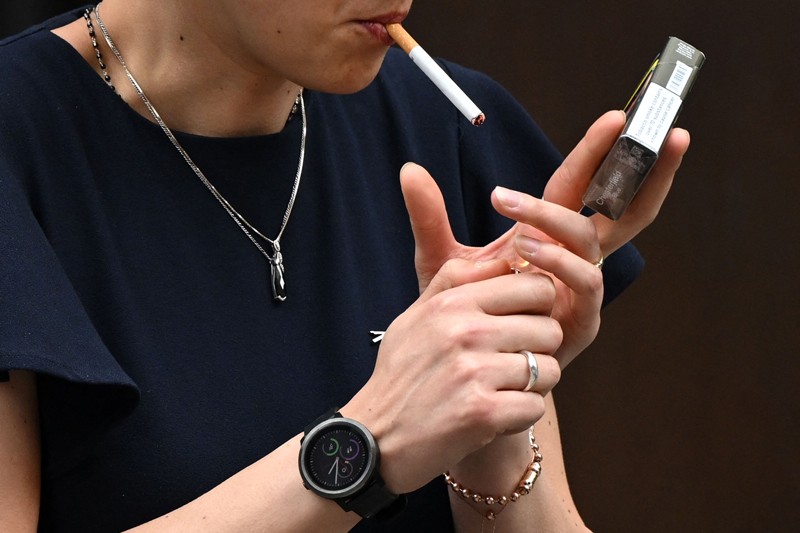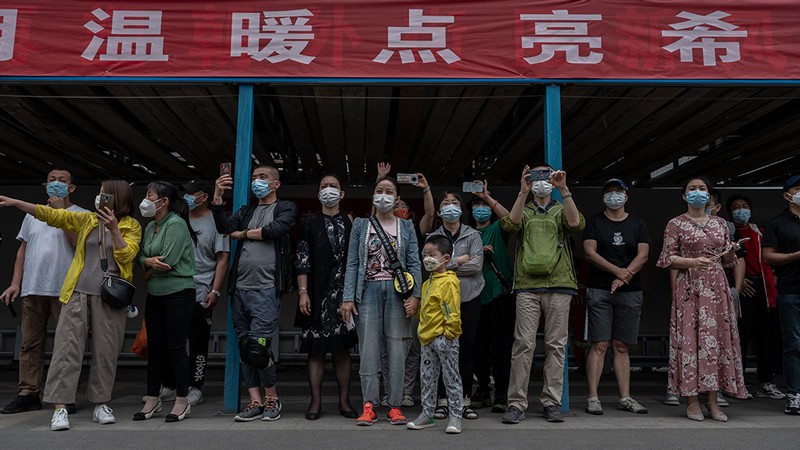Webb telescope wows with first image of an exoplanet
Table of Contents
The James Webb Space Telescope has taken its first picture of a planet beyond the Solar System — opening a window to understanding other worlds and underscoring the telescope’s immense capabilities.
The image (shown) is of a planet called HIP 65426 b, an object similar to Jupiter, but younger and hotter, that lies 107 parsecs from Earth in the constellation Centaurus. Although it looks like a pixelated light bulb, it is the first exoplanet image ever taken at deep infrared wavelengths, which allow astronomers to study the full range of a planet’s brightness and what it is made of (the star symbol marks HIP 65426 b’s star, whose light the telescope blocked).
“It gives us wavelengths we’ve never seen planets at before,” says Beth Biller, an astronomer at the University of Edinburgh, UK, and a member of the discovery team. The image was reported in a paper on a preprint server on 31 August (A. L. Carter et al. Preprint at https://arxiv.org/abs/2208.14990; 2022); the study has not been peer reviewed.
Astronomers know of more than 5,000 exoplanets, but they have taken pictures of only around 20. Imaging exoplanets directly is difficult, because they are often lost in the glare of the star around which they orbit.
But observing them at infrared wavelengths, as Webb does, helps to boost the contrast between star and planet. “You’re in the regime where planets are brightest and stars are dimmest,” says Aarynn Carter, an astronomer at the University of California, Santa Cruz, and lead author of the preprint.
In July this year, Carter’s team used instruments on Webb to physically block the light from HIP 65426 b’s star, allowing the planet to pop into view. HIP 65426 b orbits its star at roughly twice the distance that Pluto orbits the Sun.
Unlocking the extra infrared wavelengths allowed the astronomers to better understand how much energy the planet’s atmosphere radiates. That, in turn, allowed them to use models of stellar evolution to pin down its mass to 7 times, and its radius to 1.45 times, that of Jupiter.
HIP 65426 b is probably around 14 million years old, making it “a baby Jupiter”, Biller says. Our Solar System is around 4.5 billion years old.
Almost half of cancer deaths are preventable
Nearly 50% of cancer deaths worldwide are caused by preventable risk factors, such as smoking, according to the largest study of the link between cancer burden and risk factors (GBD 2019 Cancer Risk Factors Collaborators. Lancet 400, 563–591; 2022).
Using estimates of cancer cases and deaths from more than 200 countries, researchers found that avoidable risk factors were responsible for nearly 4.5 million cancer deaths in 2019. That represents more than 44% of global cancer deaths that year. Half of all male deaths from cancer, and more than one-third in women, were due to preventable risk factors including alcohol use, unhealthy diets, unsafe sex and workplace exposure to harmful products, such as asbestos.
The findings largely confirm results from smaller studies and highlight how reducing exposure to risk factors could help to prevent many cancer cases, says Rudolf Kaaks, a cancer epidemiologist at the German Cancer Research Center in Heidelberg. The take-home message is simple: “Don’t smoke,” says Kaaks. “Don’t get overweight and don’t drink too much alcohol.”
The results could be useful for policymakers in determining what modifiable risk factors to target in cancer-control efforts, say the study’s authors.
Billion-dollar project to prep pandemic drugs
A new Aus$1.5-billion initiative in Australia will look for technologies that can create drugs within weeks or months of a pandemic threat emerging.
The Cumming Global Centre for Pandemic Therapeutics (CGCPT) launched on 31 August with a philanthropic donation of Aus$250 million (US$171 million) from Canadian businessperson Geoffrey Cumming.
“It’s a very ambitious effort,” says infectious-disease researcher Sharon Lewin, director of the Peter Doherty Institute for Infection and Immunity in Melbourne, Australia. She will lead the centre, which will be based at the institute.
The Victorian Government has committed Aus$75 million over 10 years to the centre, which has a funding target of Aus$1.5 billion over 20 years.
Similar efforts focused on finding treatments for viruses with pandemic potential have been established overseas. But most of these focus on creating small-molecule drugs that are similar to existing drugs for COVID-19, says Lewin.
The CGCPT will look for an entirely new drug-creation platform that can be repurposed to find treatments for outbreaks of pathogens with pandemic potential.



